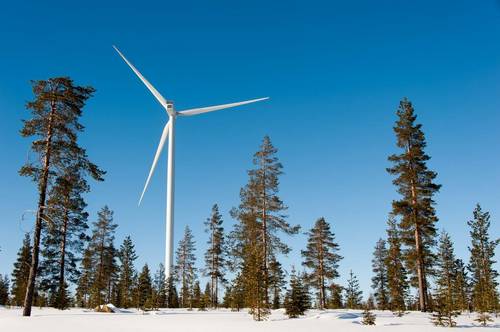Finland, a country known for its vast forests and thousands of lakes, is increasingly embracing wind power as a key component of its energy mix. As the global community strives to reduce greenhouse gas emissions and transition to renewable energy sources, Finland has recognized the potential of wind power to contribute to a more sustainable future. With ambitious targets set for renewable energy production, the country is making significant strides in harnessing the power of wind to meet its energy needs.
The Finnish government has set a goal to achieve carbon neutrality by 2035, which requires a significant increase in the share of renewable energy sources in the country’s energy mix. Wind power, in particular, has been identified as a promising solution to help Finland reach this target. The country’s flat terrain, long coastline, and favorable wind conditions make it an ideal location for wind power generation. In recent years, Finland has witnessed a surge in wind power capacity, with several large-scale wind farms being developed across the country.
One of the key drivers behind the growth of wind power in Finland is the attractive investment environment created by the government. In 2018, the Finnish government introduced a premium-based subsidy scheme for renewable energy projects, which has significantly boosted investor confidence in the sector. Under this scheme, renewable energy producers receive a guaranteed price for the electricity they generate, providing a stable income stream and reducing the risks associated with fluctuating market prices. This has led to a surge in investments in wind power projects, with both domestic and international investors keen to capitalize on the opportunities presented by Finland’s renewable energy sector.
In addition to government support, technological advancements have also played a crucial role in the growth of wind power in Finland. The development of larger and more efficient wind turbines has enabled the country to harness wind energy more effectively. Moreover, improvements in energy storage solutions have helped to address the intermittent nature of wind power, ensuring a more stable and reliable supply of electricity. These technological advancements have not only made wind power more competitive with traditional energy sources but have also contributed to the rapid decline in the cost of wind energy production.
The growth of wind power in Finland has also been accompanied by a strong focus on sustainability and environmental protection. Wind farm developers are required to adhere to strict environmental regulations and conduct thorough impact assessments to minimize any potential harm to the surrounding ecosystems. This commitment to sustainability has helped to garner public support for wind power projects, with local communities increasingly recognizing the benefits of clean and renewable energy.
As Finland continues to expand its wind power capacity, the country is also exploring opportunities for cross-border collaboration and knowledge sharing. The Nordic countries, which include Denmark, Norway, and Sweden, have a long history of cooperation in the energy sector, and there is significant potential for further collaboration in the field of wind power. By working together, these countries can share best practices, pool resources, and develop innovative solutions to drive the growth of wind power in the region.
In conclusion, the growing importance of wind power in Finland’s energy mix is a testament to the country’s commitment to a sustainable and low-carbon future. With strong government support, technological advancements, and a focus on environmental protection, Finland is well on its way to becoming a global leader in wind power generation. As the country continues to invest in renewable energy sources and collaborate with its Nordic neighbors, it is paving the way for a cleaner, greener, and more sustainable tomorrow.


